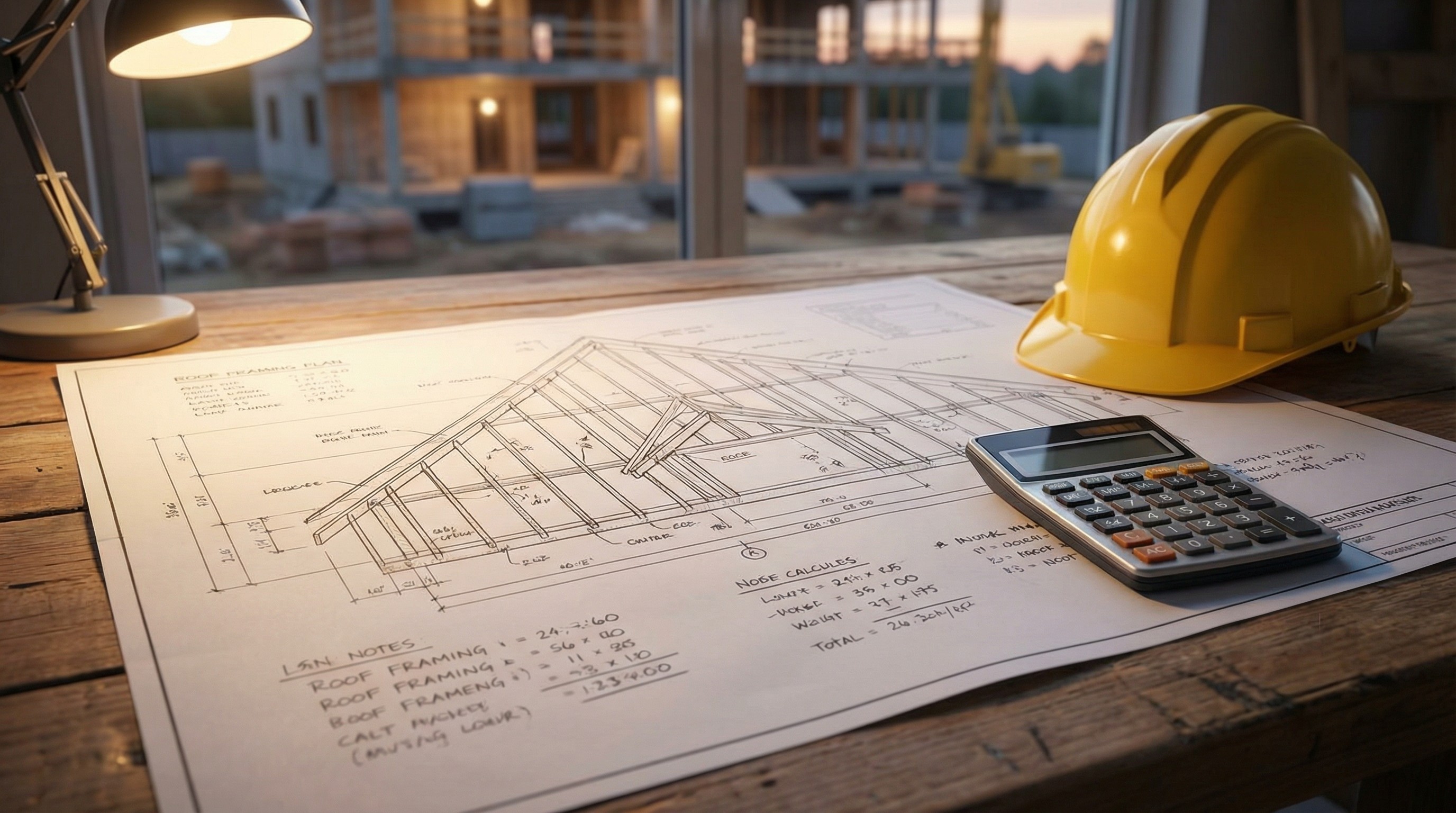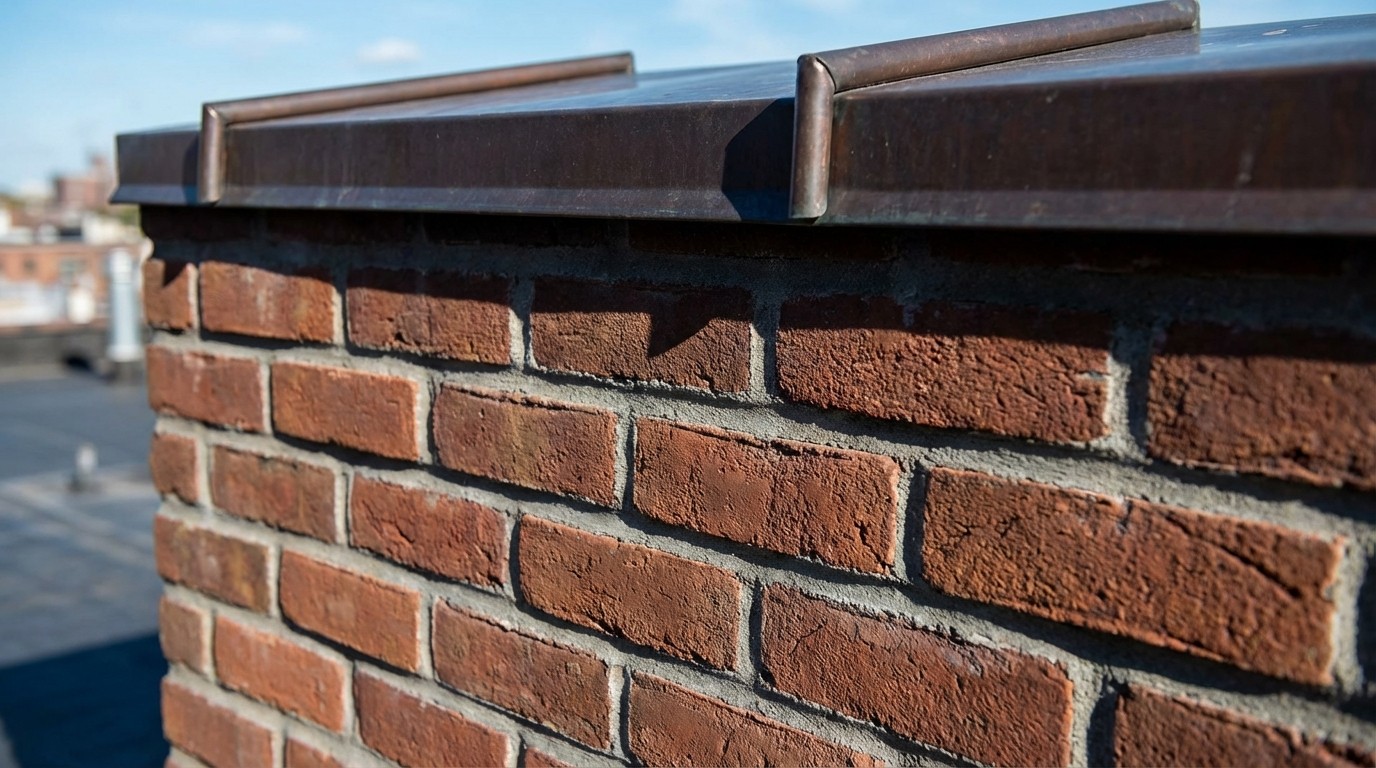If you're planning a roof project, you've probably heard contractors mention trusses and rafters-but what's the real difference? Both support your roof, but they work in completely different ways. Trusses are pre-built in a factory and delivered ready to install, while rafters are custom-cut and assembled by skilled carpenters right on your property.
The choice between them affects your budget, your timeline, and your future options for using that attic space. This guide breaks down how each option works, what they cost, and how to figure out which one fits your project.
What Is the Difference Between Trusses and Rafters
Trusses are pre-engineered triangular frames built in a factory and delivered to your job site ready to install. Rafters are individual wood beams that carpenters cut and assemble on-site, piece by piece. That's the key difference you need to understand.
Here is why it matters. Trusses go up quickly and typically cost less because the la...
Both do the same job: they support your roof and transfer its weight to the exterior walls. The choice between them comes down to your budget, your timeline, and what you want underneath your roofline.
What Is a Roof Rafter
A rafter is a single wood board that runs diagonally from the top of your exterior wall up to the peak of the roof. At the peak, rafters connect to something called a ridge board, which is simply a horizontal board that ties all the rafters together at the top.
Carpenters build rafters one at a time on the job site. They measure, cut, and nail each piece into place. This approach is sometimes called stick framing because the roof goes up stick by stick. This traditional approach gives you maximum flexibility when you want a custom roof design.

Common rafter types
Most residential roofs use a few standard rafter configurations:
Common rafters: Run in a straight line from the wall plate to the ridge. You'll see these on almost every rafter-framed roof.
Hip rafters: Angle from the corners of the building up to the ridge on hip-style roofs, where all four sides slope downward.
Valley rafters: Sit in the valleys where two sloped roof sections meet, channeling water toward the gutters.
Pros of rafters
Rafters can be the right choice for your project when you need these advantages:
Design flexibility: Rafters can follow almost any roof shape. Complex angles, curves, and custom designs are all possible.
Open attic space: Without internal webbing, the attic stays clear for storage or a future conversion into living space.
Vaulted ceilings: If you want cathedral ceilings or an open, airy feel inside, rafters make that straightforward.
Easier modifications: Since each rafter is independent, adjustments during construction or years later are simpler to pull off.
Cons of rafters
Before choosing rafters, you should also consider these potential drawbacks:
Higher labor costs: This typically means higher labor costs for your framing crew.
Requires skilled carpenters: The quality of a rafter roof depends heavily on your carpenter's skill and experience. Experience matters.
Limited span: Rafters alone cannot stretch as far as trusses. Wide open rooms may require support beams or interior walls.More room for error: Building on-site means more potential for weather delays and human error compared to controlled factory conditions.
What Is a Roof Truss
A truss is a pre-made triangular frame. Factories build trusses using lightweight lumber connected by metal plates called gussets. Inside the triangle, diagonal and vertical pieces called webbing create smaller triangles that distribute weight efficiently.

Trusses arrive at your property ready to lift into place. A crew with a crane can often install an entire roof's worth of trusses in a single day. The speed is one of the biggest reasons builders favor them for new construction.
Common truss types
You will encounter a few standard truss designs in residential work:
King post truss: The simplest design, with one vertical post running from the base to the peak.
Queen post truss: Uses two vertical posts instead of one, allowing for slightly wider spans.
Fink truss: Features a W-shaped webbing pattern inside. This is one of the most common designs for homes.
Pros of trusses
Trusses have become the default for most new homes, and here is why:
Faster installation: Pre-built trusses go up in hours rather than days. Less time on-site means less exposure to weather delays.
Lower overall cost: Factory production reduces labor hours and material waste, which typically translates to savings.
Engineered precision: Each truss is designed for your roof's exact dimensions and load requirements. There is less guesswork.
Longer spans: Trusses can stretch 60 feet or more without needing interior support walls, which opens up floor plan possibilities.
Cons of trusses
Trusses are not perfect for every situation:
Limited attic space: The webbing inside fills most of the usable area. Forget about finishing the attic later.
Difficult to modify: Cutting or altering a truss after installation can weaken the entire structure. Changes require an engineer.
Delivery logistics: Trusses are large and awkward. You will need a crane and enough space on-site to stage them.
Less design flexibility: Unusual roof shapes, dormers, or complex angles may not work well with standard truss configurations.
Key differences between trusses and rafters
A side-by-side comparison makes the distinctions clearer:
Feature | Trusses | Rafters |
|---|---|---|
Construction | Factory-built, delivered ready | Built on-site by carpenters |
Installation time | Faster, often one day | Slower, several days or more |
Cost | Generally lower | Generally higher |
Attic space | Limited by internal webbing | Open for storage or conversion |
Design flexibility | Less flexible | More flexible |
Span capability | Longer spans without support | Needs support for wide spans |
Modifications | Difficult after installation | Easier to adjust |
How Much Do Trusses and Rafters Cost
Trusses typically cost less overall. Factory production keeps material waste low, and faster installation means fewer labor hours on your payroll. Rafters, by contrast, require more time on-site, and that time adds up.

Several factors influence pricing for both options:
Roof size and pitch: Larger or steeper roofs require more material and more labor, regardless of framing method.
Complexity: Custom shapes, dormers, or unusual angles add cost whether you choose trusses or rafters.
Local labor rates: What carpenters charge varies significantly by region.
Material availability: Lumber prices fluctuate, and truss lead times can stretch during busy seasons.
The honest answer is that costs depend on your specific project. For a typical 2,000...
Tip: When reviewing quotes, look for separate line items for materials and labor. This breakdown makes it easier to compare bids from different contractors.
How to Tell If You Have Trusses or Rafters
Head into your attic with a flashlight and look up. The framing will tell you what you have.
Signs of trusses:
Triangular frames with internal webbing, meaning diagonal and vertical pieces forming smaller triangles inside
Metal connector plates at the joints where pieces meet
A uniform, factory-made appearance throughout
Signs of rafters:
Individual beams running from the walls to a ridge board at the peak
No internal webbing filling the attic space
Nails or screws at joints rather than metal plates
If your attic feels open and spacious, you likely have rafters. If crisscrossing wood pieces fill the space, those are trusses.

How to Choose Between Trusses and Rafters
The best choice depends on several key factors specific to your situation.
When rafters make more sense
Rafters tend to be the better fit when:
You want a custom or complex roof design with unusual angles or curves
Vaulted or cathedral ceilings are part of your vision
You plan to finish the attic as living space someday
Your roof includes dormers or other features that do not fit standard truss shapes
When trusses make more sense
Trusses often win out when:
Budget is a top priority and you want to minimize labor costs
Your roof has a standard shape without complex features
You want faster construction to reduce weather exposure during framing
The roof spans a large area without interior support walls
You have no plans to use the attic for anything beyond basic storage
How building codes affect your choice
Local codes sometimes require engineered trusses for certain spans or load conditions. This is especially common in areas prone to hurricanes, heavy snow, or earthquakes. Your contractor or local building department can clarify what applies to your project.
After storm damage, some insurance companies or inspectors may have specific requirements as well. It's worth asking about this early in the process so you won't face any surprises later.




